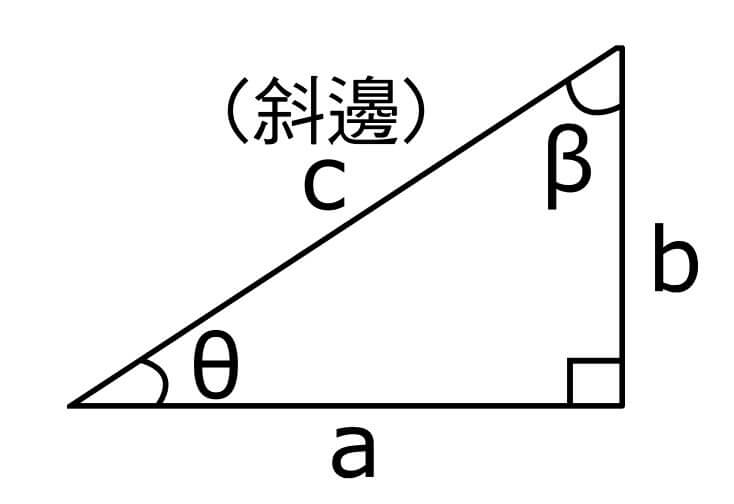13. 三角比 > 三角函數的定義
13.1. 三角函數的定義
三角比函數的定義 係由直角三角形度發展出嚟嘅。要學好 三角比函數 ,最基本條件係要能夠清楚咁講出一個直角三角形入面嘅資料。
 喺右圖中的直角三角形入面,
喺右圖中的直角三角形入面,
- 有三條邊,邊長分別為 a, b, c
- 另三隻角當中有一隻係直角
- “斜邊”永遠係直角對面嘅邊
- 另外兩條邊可以叫作“鄰邊”及“對邊”。但邊條係“對邊”就要睇你攞住邊隻角嚟講。
- 對 \(\theta\) 嚟講
- a 係“鄰邊” (即 \(\theta\) 旁邊嘅邊)
- b 係“對邊” (即 \(\theta\) 對面嘅邊)
- 對 \(\beta\) 嚟講
- b 係“鄰邊” (即 \(\beta\) 旁邊嘅邊)
- a 係“對邊” (即 \(\beta\) 對面嘅邊)
- 對 \(\theta\) 嚟講
三個基本嘅三角比函數 (sin, cos, tan) 嘅定義係:
- \(\sin \theta = \dfrac{對邊}{斜邊} \)
- \(\cos \theta = \dfrac{鄰邊}{斜邊} \)
- \(\tan \theta = \dfrac{對邊}{鄰邊} \)
好多教科書會寫 \(sin \theta = \dfrac{a}{c} ,cos \theta = \dfrac{b}{c} ,tan \theta = \dfrac{a}{b} \)。但大家一定要留意當中嘅 a、b、c 一定係 \(\theta\) 嘅對邊、對邊及斜邊。 所以大家都係記 \(\sin \theta = \dfrac{對邊}{斜邊} \) 等嘅公式吧。
